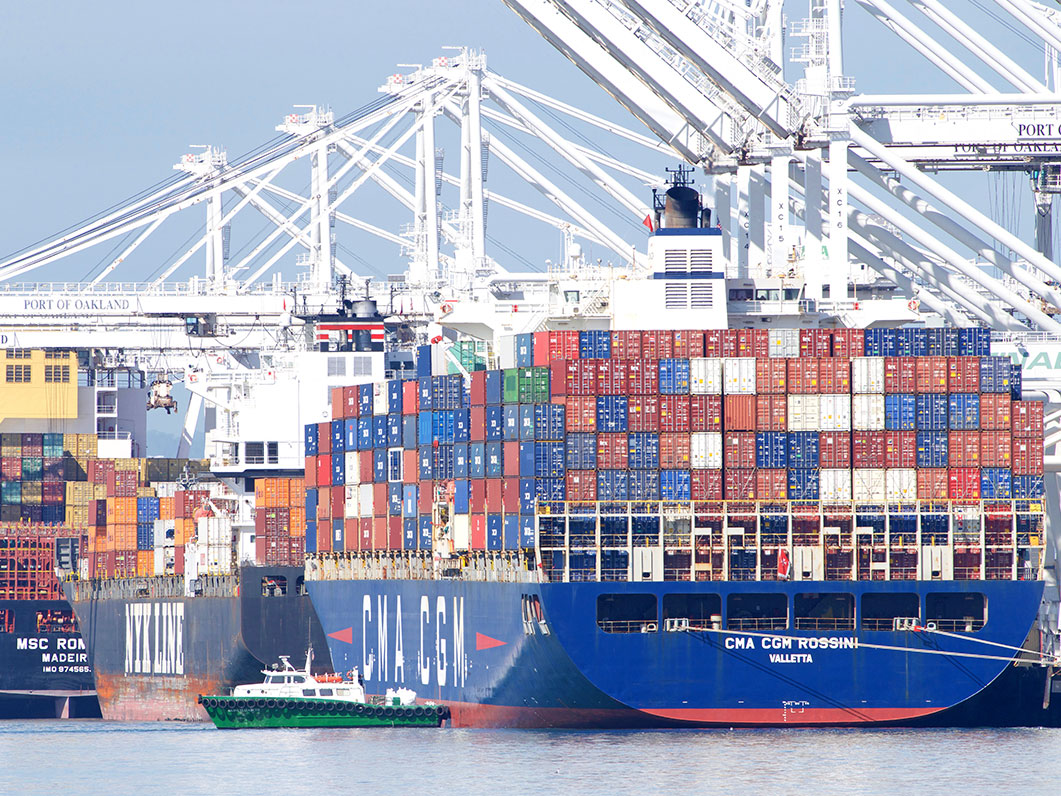American Farm Bureau Federation President Zippy Duvall said in a prepared release on Jan. 31 his organization supports the USDA and Port of Oakland partnering to build a 25-acre container yard “with the goal of reducing congestion and improving export flow of agricultural commodities.”
Duvall said, “Supply chain issues are a big concern for farmers and ranchers and we appreciate USDA’s actions to ease congestion at several ports. Today’s announcement about increasing capacity at the Port of Oakland, our third largest port for containerized waterborne agricultural products, is welcome news. It’s an important step to ensure America’s farmers and ranchers have a reliable path for exporting the rice, beef, pork, fruits, vegetables, almonds and many other agricultural goods grown in the United States.”
He continued, “Further steps must be taken to prevent carriers from sending empty containers out of U.S. ports, such as the passage and signing of the Ocean Shipping Reform Act. Port congestion is one piece of a larger puzzle, and AFBF will continue working with industry, federal agencies and Congress to untangle the complicated web of supply chain issues facing farmers and ranchers.”
The USDA announcement that same day came from Agriculture Secretary Tom Vilsack, who said the agency plans to “increase capacity at the Port of Oakland and improve service for shippers of U.S. grown agricultural commodities.”
He explained the USDA and Port of Oakland will be setting up a new 25-acre “pop-up” site to make it easier for agricultural companies to fill empty shipping containers with commodities.
A USDA release said, “Fewer containers have been made available for U.S. agricultural commodities, as ocean carriers have circumvented traditional marketing channels and rushed containers back to be exported empty and as a result, many of these carriers have suspended service to the Port of Oakland. USDA is now taking action to reduce these shipping disruptions that have prevented U.S. agricultural products from reaching their markets.”
Vilsack noted, “COVID-19 revealed vulnerabilities across our supply system, both at our ports and in the agricultural sector. As the economy has made an historic recovery, it has put additional strain on the supply chain. The Biden-Harris Administration is using creative approaches to improve port operations while elevating American-grown food and fiber. This partnership with the Port of Oakland builds on our aggressive approach to addressing challenges within the supply chain and sends a strong signal that we are committed to working across the Administration and with state, local and private partners to mitigate complex port capacity and congestion issues and to keep American agriculture on the move.”
Of particular note, Transportation Secretary Pete Buttigieg said, “This creative partnership with USDA and the Port of Oakland will help American farmers and agricultural producers move their product to market while also making better use of empty containers that are causing congestion at the ports. After we helped set up inland pop-up ports at the Port of Savannah, we witnessed significant improvements in the flow of goods, and we expect to see similarly positive results once this Oakland facility is open. We look forward to engaging with other ports on similar solutions to congestion.”
California Department of Food and Ag Secretary Karen Ross added, “This is an important step that shows the value of players in the supply chain coming together to identify challenges as well as potential solutions. I wish to thank the USDA for making this investment. It will help improve access to overseas markets for California agriculture producers at a critical time of year for exports of high-value specialty crops.”
The release said the site “will provide space to prepare empty containers beginning in early March. Agricultural companies and cooperatives will have easier access to these containers, which they will fill with commodities, restoring shipping services to agricultural products while relieving congestion. The new site will also have a dedicated gate with the ability to pre-cool refrigerated shipping containers to receive perishable commodities, all while avoiding bottlenecks that would have resulted from entering the main area of the Port.”


